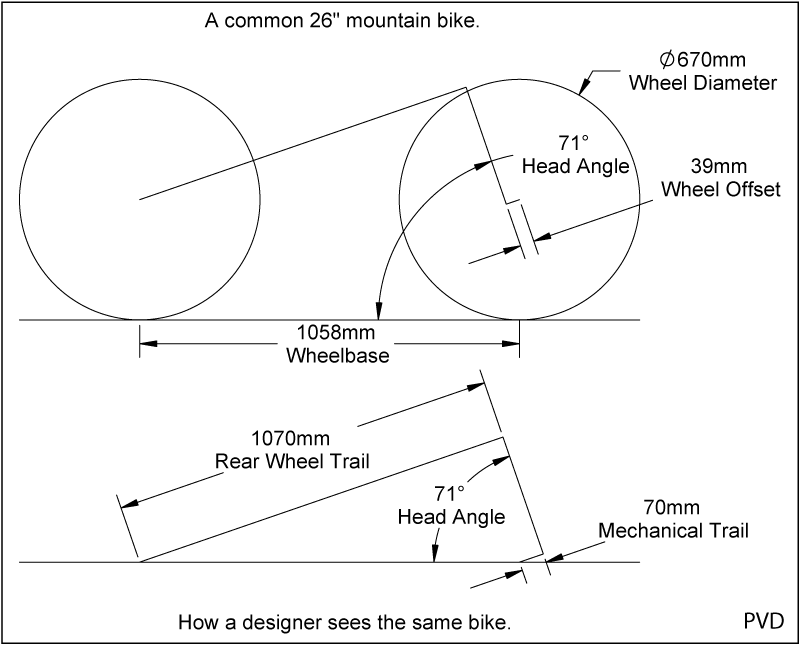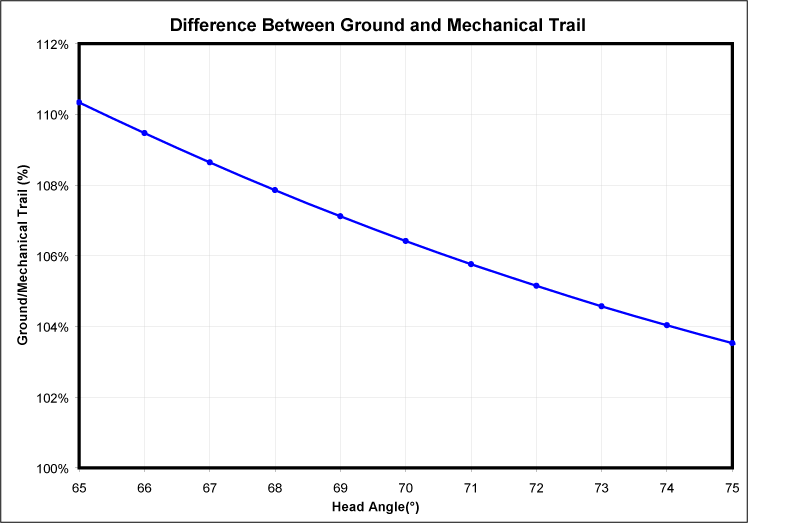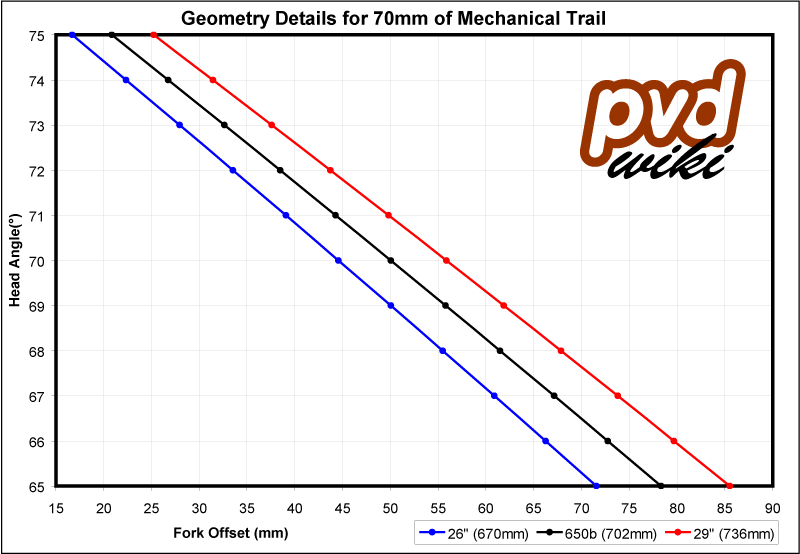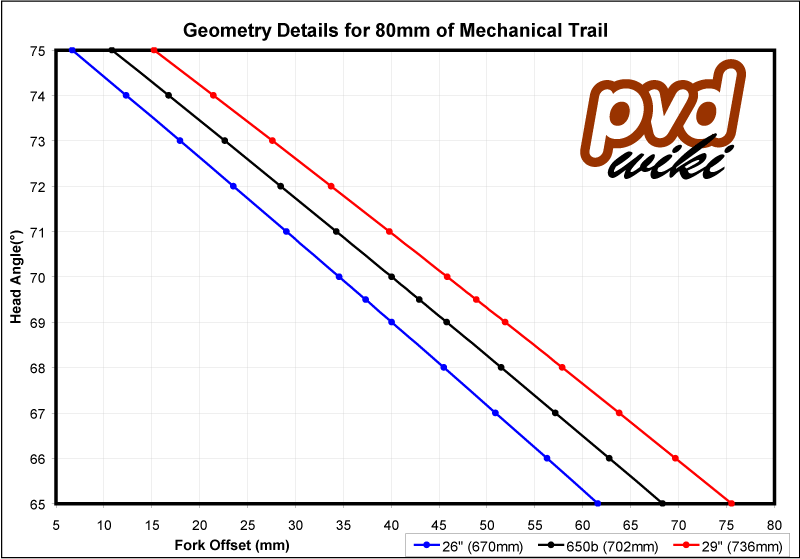Difference between revisions of "Mechanical Trail"
(→What is Ground Trail) |
|||
| (8 intermediate revisions by the same user not shown) | |||
| Line 2: | Line 2: | ||
Mechanical Trail (or Real Trail) refers to the length of the lever that, when combined with the contact patch, produces a self righting effect on the bicycle or motorcycle. The longer the lever, the more the is held true to the geometry of the cycle and influenced less by ground conditions. | Mechanical Trail (or Real Trail) refers to the length of the lever that, when combined with the contact patch, produces a self righting effect on the bicycle or motorcycle. The longer the lever, the more the is held true to the geometry of the cycle and influenced less by ground conditions. | ||
| − | Here is how the geometry looks on my 2005 CBR600RR:<br><br> | + | [[Image:Trail views.gif]]<br><br> |
| − | [[image:600rr-front-end.gif]]<br> | + | |
| + | Here is how the front geometry looks on my 2005 CBR600RR:<br><br> | ||
| + | [[image:600rr-front-end.gif]]<br><br> | ||
==What is Ground Trail== | ==What is Ground Trail== | ||
| Line 16: | Line 18: | ||
==The Math== | ==The Math== | ||
| − | *Offset = Wheel Radius * | + | *Offset = Wheel Radius * Sin (90 - Head Angle) - Mechanical Trail |
| − | *Mechanical Trail = Wheel Radius * | + | *Mechanical Trail = Wheel Radius * Sin (90 - Head Angle) - Offset |
| + | *Rear Wheel Trail = Wheelbase * Sin (Head Angle) + Mechanical Trail | ||
| + | <br><br> | ||
| + | |||
| + | *Ground Trail = Wheel Radius / Tan (Head Agle) - Offset / Sin(Head Angle) | ||
| + | *Rear Ground Trail = Wheelbase + Mechanical Trail / Sin (Head Angle) | ||
| + | *Fork Projection = Rear Wheel Trail * Cot (Head Angle)<br><br> | ||
| + | |||
| + | |||
| + | :*Mechanical Trail = Ground Trail * sin(Head Angle) | ||
| + | :*Ground Trail = Mechanical Trail / sin(Head Angle) | ||
==Charts== | ==Charts== | ||
| Line 29: | Line 41: | ||
<br><br> | <br><br> | ||
| + | ==Links== | ||
| + | [http://books.google.com/books?id=84hF-qoR5I8C&lpg=PP1&dq=tony%20foale&pg=PT73#v=onepage&q=&f=false Tony Foale] | ||
[[category:Bicycle]] | [[category:Bicycle]] | ||
[[category:Frame Building]] | [[category:Frame Building]] | ||
Latest revision as of 23:22, 29 September 2009
Contents
What is Mechanical Trail
Mechanical Trail (or Real Trail) refers to the length of the lever that, when combined with the contact patch, produces a self righting effect on the bicycle or motorcycle. The longer the lever, the more the is held true to the geometry of the cycle and influenced less by ground conditions.
Here is how the front geometry looks on my 2005 CBR600RR:
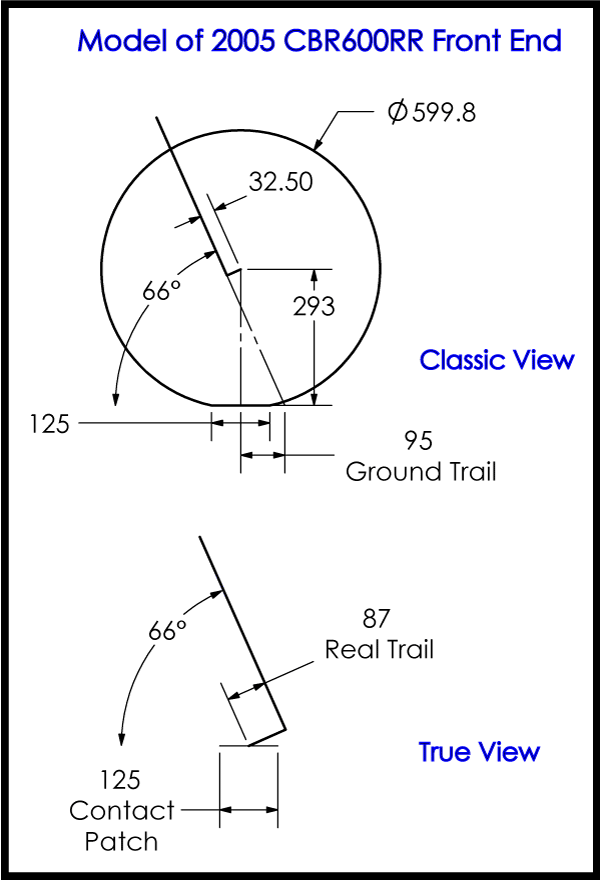
What is Ground Trail
Ground Trail is makes reference to an imaginary line on the ground. It means nothing. The only geometry feature that runs along the ground on a bicycle or motorcycle is contact patch.
Only ignorant people make reference to ground trail. Sorry folks.
Also, ground trail differences change with head angle change. This adds an additional layer of confusion since the rates of actual change to explained change are moving away from each other when using ground trail.
The Math
- Offset = Wheel Radius * Sin (90 - Head Angle) - Mechanical Trail
- Mechanical Trail = Wheel Radius * Sin (90 - Head Angle) - Offset
- Rear Wheel Trail = Wheelbase * Sin (Head Angle) + Mechanical Trail
- Ground Trail = Wheel Radius / Tan (Head Agle) - Offset / Sin(Head Angle)
- Rear Ground Trail = Wheelbase + Mechanical Trail / Sin (Head Angle)
- Fork Projection = Rear Wheel Trail * Cot (Head Angle)
- Mechanical Trail = Ground Trail * sin(Head Angle)
- Ground Trail = Mechanical Trail / sin(Head Angle)
Charts
What Good is All This?
So you can have a bike built right and choose the right fork. silly. See: Suspension Fork Geometry Info
